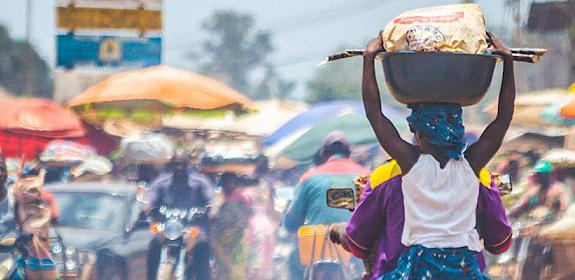Producers at centre of Vicuña Convention meeting
La Paz, Bolivia, 9th January 2013—A crucial technical meeting of the Vicuña Convention took place in mid November, which for the first time brought together Vicuña producers with official delegations from each of the Convention’s five Member countries. TRAFFIC helped support and co-finance the meeting.

Vicuña are wild South American camelids, relatives of the alpaca and llama, which live in the high Andes. They were hunted close to extinction for their extremely fine wool, and by the mid 1970s only around 6,000 animals were left, but thanks to a range of protection measures formally implemented through a Convention between the five range States—Peru, Bolivia, Chile, Argentina and Ecuador—numbers have recovered dramatically, to around 350,000 today.
Key to recovery of the population of the animals has been the introduction of methods to secure the valuable wool through live shearing, following annual round-ups of the animals during the so-called “Chaccu” festivals. However, poaching is still recognised as a major threat to the Vicuña that can only be effectively tackled through co-operation between neighbouring authorities and local communities.
Represented at the November meeting was Ecuador, a country with a single, introduced Vicuña population, and who next March will be seeking to be granted permission through CITES (the Convention on International Trade in Endangered Species of Wild Fauna and Flora) to export Vicuña wool.
According to Bernardo Ortiz, TRAFFIC’s Director in South America: “The meeting marked a turning point in Vicuña management efforts; previously Vicuña Convention meetings involved high-level government delegations and scientific experts, but in La Paz, for the first time, Vicuña producers felt fully empowered and central to leading the process forward, previously they been on the fringes of decision-making.”
Particular expertise the producers brought to the table were insights into production methods, which help improve the quality of the Vicuña fibre, adding value to the final product. Following the meeting, there are plans to establish a network of Vicuña fibre producers from the five countries, to co-ordinate the collection and shipment of the product for processing.
Already an advanced network exists in Bolivia, where a producers’ association stockpiles the nation’s Vicuña wool ahead of sale and shipment. The Bolivian example could be mirrored elsewhere, helping smaller producers in Peru, for example, to achieve economic viability and achieve the success of the large, highly organized producers in the country.
“By working together in co-operatives and producer networks, producers with low volumes of wool production gain the opportunity to compete in the global market place,” says Ortiz. “It means a more equitable sharing of the profits from this valuable natural resource.”
“Careful management means everyone has a voice, everyone gets a fair share, and everyone benefits, not forgetting the Vicuña themselves, whose fortunes have been turned around thanks to sustainable exploitation of their valuable wool.”
Below, a remarkable video of the annual Chaccu Vicuña round-up:




